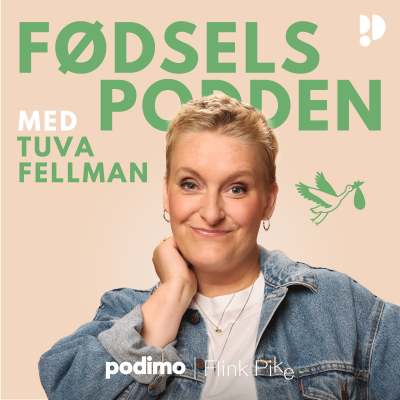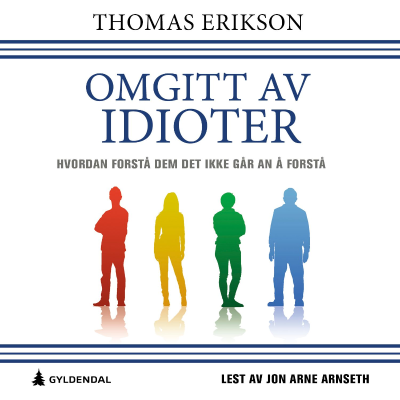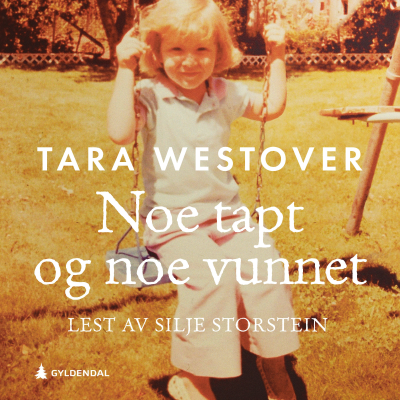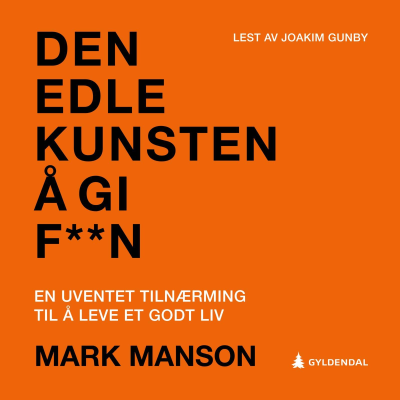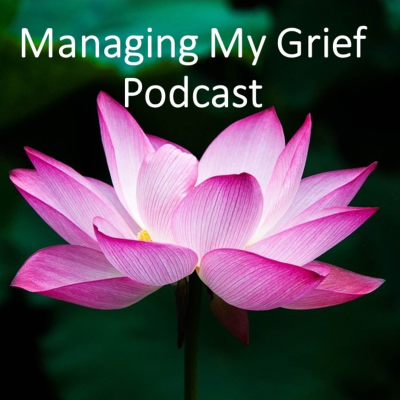
Managing My Grief
Podkast av Miss Dilworth
Learning to live with grief after experiencing loss can be challenging. Listen to Licensed Clinical Professional Counselor, Miss Dilworth, provide psy...
Prøv gratis i 14 dager
Etter prøveperioden kun 99,00 kr / Måned.Avslutt når som helst.
Alle episoder
14 EpisoderThat’s an excerpt from the show. Today, we’ll be discussing masked grief, and, here’s the intro. Intro I’m glad you chose to join me for this discussion on Masked Grief. At the end of the show I’ll have a “So, what to do?” section where I’ll share ideas and strategies you can use to work through Masked Grief. Did you know that there are many types of grief? Death alone is challenging to grieve, but there are other losses that occur after losing companionship, such as changes in family roles, financial changes, and loss of dreams of what could be. Keep in mind that the type of grief we’ll be discussing isn’t “good” or “bad,” it’s a mere way for you to identify what you are experiencing. When you understand what you are experiencing, it can be used as a grounding place and it can bring normalcy to the experience, which in itself is gratifying and beneficial. Masked Grief is when you are unable to recognize that your symptoms and behaviors are related to loss. Symptoms are often masked as either physical symptoms or other maladaptive behaviors. I like how GriefRecoveryMethod.com explained it, “The human body is designed to be a processing center. We consume and process food to create energy and to fuel our various organs. If we consume more food than necessary, our body stores it as fat. Too much of this fat storage can have negative consequences for our overall health. Likewise, the body is designed to process our emotional experiences. If we suppress, store and mask those emotions deep inside, this can result in negative consequences for our general health as well. There are consequences of stuffing sad emotions. When you continually stuff these feelings of emotional pain, rather than putting voice to them, your body tend to send you signals that they are not happy. Some people get headaches, while others respond with intestinal issues and ulcers.” As a mental health therapist, I’ve seen that quite frequently. A person has physical symptoms, they go to their primary care doctor who runs tests after tests, after test, after tests, but can’t find anything wrong. Thankfully, in recently years, through collaboration and discussion, medical doctors have realized and most have accepted that when a patient comes into their office with a physical ailment and they are unable to identify the underlying cause, they will refer them to me, a mental health therapist. Many of my clients have come to me via referrals from their primary care doctor, because the doctor understands that those physical ailments may be the result of emotional suppression. In a previous show I mentioned a guy name Chris. He was a senior in college. A few months before graduating, his mother died. A few weeks later his appetite changed and a few more weeks later he developed an eating disorder. Fast forward to a year, Chris decided to get help from his primary care doctor who then referred him to a mental health therapist who specializes in eating disorders. The specialist used a behavioral approach to supporting Chris. The eating disorder specialist gives Chris all the tools needed to learn to live a healthier life, but realizes that the underlining cause of Chris’ eating disorder are the suppressed emotions he has from his mother’s death. The last time Chris showed mourning was when he cried upon entering the house for the first time after his mother died, which was over a year ago. The eating disorder specialist decided to refer Chris to a mental health therapist who specializes in grief. As Chris begins to work through his grief, his eating disorder symptoms worsen. Thankfully, he remembers the skills he learned while receiving eating disorder services and was able to utilize them during his grief healing process.
MMG13: Types of Grief: Absent Grief Intro I’m glad you chose to join me for this discussion on Absent Grief. At the end of the show I’ll have a “So, what to do?” section where I’ll share ideas and strategies you can use to work through Absent Grief. So, what is absent grief? I like Jennifer Kopf’s definition of absent grief that she wrote in an article on TheRecoveryVillage.com. She shares that “Absent grief [https://www.ncbi.nlm.nih.gov/pmc/articles/PMC3959027/] refers to a prolonged state of denial when a person cannot even acknowledge a loss. It can also describe an unusually long period in which a person reacts as if nothing has changed even if they can acknowledge a loss intellectually.” [My experience with absent grief.] So, what to do? 1. You must intentionally process the loss. 2. Acknowledge the feelings you do have when they arise. 3. Write them a letter to help with identifying your thoughts and feelings. 4. Think about a past memory and embrace the joy you experienced. 5. Focus on being thankful for the time you were able to have with the person. 6. Seeking support from a Mental Health Therapist to help work through absent grief. Go to Psychology Today to find a Therapist in your area. To connect with me to share your thoughts or to provide suggestions for a future show, contact me at MissDilworth.com. To learn more about grief, click on another show. To attend a grief workshop, go to ManagingMyGrief.net Have a productive day and live in your greatness. Resources: https://www.therecoveryvillage.com/mental-health/grief/#gref [https://www.therecoveryvillage.com/mental-health/grief/#gref]
Show 12 Types of Grief: Complicated Grief (Traumatic/Prolonged/PCBD) Intro I’m glad you chose to join me for this discussion on Complicated Grief. Did you know that there are many types of grief? Death alone is challenging to grieve, but there are other losses that occur after losing companionship, such as changes in family roles, financial changes, and loss of dreams of what could have been. Keep in mind that the type of grief we’ll be discussing isn’t “good” or “bad,” it’s a mere way for you to identify what you are experiencing. When you understand what you are experiencing, it can be used as a grounding place and it can bring normalcy to the experience, which in itself is gratifying and beneficial. The type of grief we’ll be discussing today has a few different names and they are Complicated Grief, Traumatic Grief, Prolonged Grief and/or Persistent Complex Bereavement Disorder. For sake of time and me not wanting to repeat all four names every time, we’ll use Complicated Grief, but understand that it can and many times is used interchangeably with the Traumatic Greif, Prolonged Grief, and Persistent Complex Bereavement Disorder. A side note, Persistent Complex Bereavement Disorder, or PCBD is located in the DSM along with other descriptions related to experiencing loss that are classified based on the intensity of the grief. In a later show, we’ll focus specifically on the different descriptions of grief that are provided in the DSM, but for now, let’s explore Complicated Grief. There are several factors that play a role in identifying Complicated Grief. An overview definition is Complicated Grief is when Normal Grief becomes severely long in duration and the grief significantly impairs the ability for one to function. A factor that plays a role in identifying Complicated Grief is the nature of the loss. For example, a loss sudden, a loss due to violence, or multiple losses. If the loss is violent in nature, many times people will use Traumatic Grief instead of Complicated Grief, but again, the names can be used interchangeably. Several other factors that help with identifying Complicated Grief are the relationship, life experiences, and social issues. One common life experience that may cause someone to be predestined to experience Complicated Grief is trauma. Many times with someone experiences a traumatic events, such as a natural disaster, any type of abuse, or being bullied it can be a precursor to them experiencing Complicated Grief at some point in their life. I enjoy watching mini documentaries about a spectrum of topics. Last week I watched a mini documentary about a gay gentleman living in a small rural town in Louisiana. The documentary was made in the late 80’s early 90’s. There were a lot of social issues related to this time period, his life style, and geographical location . The gentleman shared his experience growing up gay in his community, finding love, losing love due to AIDS, and finding love again. He said he learned from a school aged boy that many of the children would call his house, the House of AIDS. Although some people in the community were derogatory, majority were supportive, especially when his partner died. He shared how people and businesses from the small town sent him cards and letters sharing their support and sadness for his loss. He shared how thankful he was to receive the outpour of encouragement and a little surprised by some of the people’s empathy. In this case, he had a lot of support, but that’s not always the case. There are many times, especially in the 80’s and years prior, when gay person’s partner dies, they aren’t given support, or their experience is minimized and unfortunately even regarded as unimportant. As a result, Disenfranchised Grief or Ambiguous Grief is experienced, resulting in some grievers struggling to grieve. Instead of healing, they go in the opposite direct
Intro I’m glad you chose to join me for this discussion on Collective Grief. What do you think Collective Grief means? The name kind of gives it away. Collective grief is when a loss occurs and it’s felt by a group. Collective grief doesn’t have to limited to one’s local neighborhood. Collective grief can occur when a traumatic event happens in one’s state, society, nation, or world wide. I can recall when terrorist attacked Paris in 2015. The devastation was felt worldwide. Buildings and monuments in many countries including Australia, Pyramids of Giza, Dubai, London, Mexico City, Tokyo, and many more places expressed mourning and support by lighting up landmarks in blue, white, and red, which are the colors of the French flag. Collective grief can be the result of many different types of traumatic events, such as war, death of a public figure, act of terrorism, a hate crime, or a natural disaster. In 2005, Hurricane Katrina, a category 5 hurricane took almost 2,000 lives, and in 2010, Haiti experienced massive earthquakes that impacted an estimated 3 million people. Videos, pictures, and stories allowed people all over the world to witness theses natural disasters and it’s impact on fellow human beings. The loss experienced brought grief to many communities and nations. Collective grief can be validating for some. Being able to verbalize and express your sadness, disbelief, or anger after a loss and have a group of people who are also having the same reaction can bring comfort. It reminds you that you’re not alone. That someone else is having the same experience as you. When you realize that you’re not alone, empowerment steps in. In 2018, there was a school shooting in Parkland, Florida and 17 people were killed. The students of that school came together and not only vocalized their grief, but in a matter of 5 weeks, they put together a national protest called March for Our Lives where they expressed their concerns and desires for a change in gun laws. Them coming together is an example of when people share a common feeling, they can become empowered to strive to make changes. When 9/11 happened here in the U.S., there was an increase in enlistment into the military and supporting government agencies. Some joined because they saw others experiencing the same feelings they were having and was empowered to take action to hopefully make a difference. Collective grief also allows people to mourn together. When a public figure dies or a murder happens in a community, here in the U.S., many times there’s a candlelit vigil. When someone dies in a family, there’s usually a funeral or a memorial service. In D.C. and on government properties, the flag will fly half mast in response to a tragedy. Some people call these acts a ritual or a tradition. However you want to see them, it’s undeniably a way for people to mourn together. For us to feel validated in our grief. Another common way collective grief can be experienced is by going to a memorial. There are memorials all over the world that shed light on historical tragedies, such as the Vietnam Veterans Memorial in D.C., the Korean War Memorial in South Korea, the Holocaust Memorial in Berlin, or the Taj Mahal in India. All of these memorials are for us to come together to mourn and remember those who have died. Collective grief doesn’t always mean people will come together and agree on how to mourn or what the next steps should be. The United States was shook after the Columbine High School shooting. 13 people were killed, the 2 shooters were killed and 20 others were wounded. I was in middle school at the time and I can recall seeing news reports entire demeanor change as they tried to hold back tears while sharing the tragic information. Weeks after the shooting, a gentleman drove several states over to Colorado to make a memorial for those who were killed that day. He brought
Show 10 Types of Grief: Exaggerated Grief Intro I’m glad you chose to join me for this discussion on Exaggerated Grief. Did you know that there are different types of grief? The importance of talking about the different types of grief is for you to be able to identify and get a better understanding of what you are a loved one may be experiencing. When you understand what you are experiencing, it can be used as a grounding place and it can bring normalcy to the experience, which in itself is gratifying and beneficial. Exaggerated grief is when and individual is so overwhelmed by a loss that their grief intensifies and worsens over time. The person may develop major psychiatric disorders, suicidal thoughts, nightmares, self-destructive behavior, and a disabling helplessness. For this discussion, we’ll be exploring psychiatric disorders, more specifically, phobias. Phobia is when someone has a persistently extreme or irrational fear of a specific object, activity, or situation that leads to avoidance. When I first read the definition of exaggerated grief and psychiatric disorders, I thought of the movie Jaws. For those that haven’t seen the classic movie Jaws, it’s a scary movie produced in the 70’s by Steven Spielberg. It’s a story about a shark that terrorizes a beach. The police chief wants to shut the beach down but the mayor decides to keep the beach open in hopes of not losing revenue from tourists, resulting in many more getting killed by the shark. I won’t spoil the movie, but I will say that the movie was such a hit, others have made remakes, but didn’t reach the same success at Steven Spielberg’s. My mind thought of Jaws because of the psychiatric disorder phobia. For those on the beach who lived through the shark attacks, I wondered, if the movie was real life, would they have developed, Thalassophobia, or Selachophobia, or even Potamophobia? Thalassophobia is the fear of large bodies of water, such as the sea or ocean. Selachophobia is the fear of sharks, and Potamophobia is the fear of rives or running water. Take a moment to imagine being one of the people who witnessed your friend or loved one being attacked and killed by a shark. Not only do you grieve the loss of a friend or family member, but you begin to develop an intense fear of large bodies of water and sharks. So much so, you avoid anything that has to do with large bodies of water and sharks. Visiting a lake is out of the question. As time goes on, nightmares get worse, and a phobia is developed. You are now experiencing Exaggerated Grief. Agrizoophobia came to mind due to having several friends and family members who enjoy hunting. I also have several friends, including myself who like to go camping and be in nature. Agrizoophobia is a fear of wild animals. After hearing about or witnessing a loved one being killed by an animal, can result in someone experiencing exaggerated grief, more specifically a phobia such as agrizoophobia. A couple years ago, I had an associate whose husband, cousin, and uncle died in three separate car accidents within a few years of each other. As a result, she developed Amaxophobia, a fear of riding in a car. After many years of therapy, she learned how to consistently distract herself while in the car to avoid a panic attack. Another phobia is Dromophobia- a fear crossing the street. Witnessing or hearing about a close companion who was killed while crossing the street can cause some to develop this type of phobia. Arsonphobia is the fear of fire. Nosocomephobia is the fear of hospitals. Pathophobia is the fear of disease. Pharmacophobia is the fear of taking medicine. Siderodromophobia is the fear of trains, railroads, or train travel and there are so many more phobias that can be developed while experiencing exaggerated grief. Keep in mind, that if a specif
Tilgjengelig overalt
Lytt til Podimo på telefonen, nettbrettet, datamaskinen eller i bilen!
Et univers av underholdning på lyd
Tusenvis av lydbøker og eksklusive podkaster
Ingen annonser
Ikke kast bort tid på å lytte til annonser når du lytter til Podimos innhold.
Prøv gratis i 14 dager
Etter prøveperioden kun 99,00 kr / Måned.Avslutt når som helst.
Eksklusive podkaster
Uten reklame
Gratis podkaster
Lydbøker
20 timer i måneden



